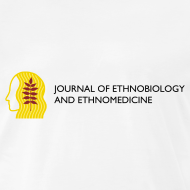The social context of wild leafy vegetables uses in Shiri, Daghestan
W czasopismie Journal of Ethnobiology and Ethnomedicine ukazał się artykuł Iwony Kaliszewskiej oraz Iwony Kołodziejskiej-Degórskiej, dostepny na zasadach Open Access.
Link do artykułu na stronie czasopisma
Abstract:
Background
Shiri is a small mountainous village in the Republic of Daghestan, in the North Caucasus. Daghestan is Russia’s southernmost and most ethnically and linguistically diverse republic, a considerable part of which belongs to the Caucasus Biodiversity Hotspot.
Various species of wild leafy vegetables are collected in Shiri and there are still many social and cultural practices connected with plant collection in the village. Yet due to migration processes, local knowledge about wild greens and their uses is being slowly forgotten or not passed on. The Shiri language is highly endangered and so are the local plant terminologies and classifications. The unstable political situation hinders local and international research, therefore we find it highly important to explore both what wild leafy vegetables are collected in this mountainous part of Daghestan and how the relation between plants and people is shaped in this linguistically and culturally diverse context. We answer the following questions: what wild leafy vegetables are collected in Shiri? Why are they important to the local people? What is the social aspect of wild leafy vegetable uses?
Methods
The methods applied were as follows: forest walks and semi-structured interviews with adult inhabitants of Shiri village, participant and non-participant observation. During the walks herbarium specimens were collected, and visual recording of plant collecting process was conducted. This article is based on fieldwork done in Shiri, Daghestan, between 2012 and 2014, over the course of 3 field trips that took place in 3 seasons.
Results
We collected and identified twenty-two local (24 botanical) species of wild leafy vegetables. Fourteen local species were used as snacks, eight for cooked dishes and three of them were also dried in order to be transported to kin living in the lowlands. It is significant that 70 % of taxa collected in Shiri are used as snacks. While snacks were collected by both sexes, greens for cooking and drying were part of the women’s knowledge.
The analysis of people-plant relations showed that care practices constitute an important part of these relations. Through the giving of wild greens, Shiri people express care for co-villagers and migrants and show their respect for elders. In the narratives about wild greens, their nutritional and taste value as well as perceived exceptionality were emphasized.
Conclusions
1) Wild leafy vegetables are a significant element of everyday social life in Shiri in regard to mutual care, respect for elders and local identity. 2) Gender has a greater influence on practical skills than on declarative plant knowledge. 3) Names of plants are publicly discussed with elders and are not always fixed. 4) The moral value ascribed to giving in the local culture is expressed through wild leafy vegetables. 5) Care expressed through sending wild leafy vegetables helps to sustain social ties between migrants and Shiri inhabitants. 6) Identity, health and naturalness discourses are adding value to the local knowledge about wild leafy vegetables.



